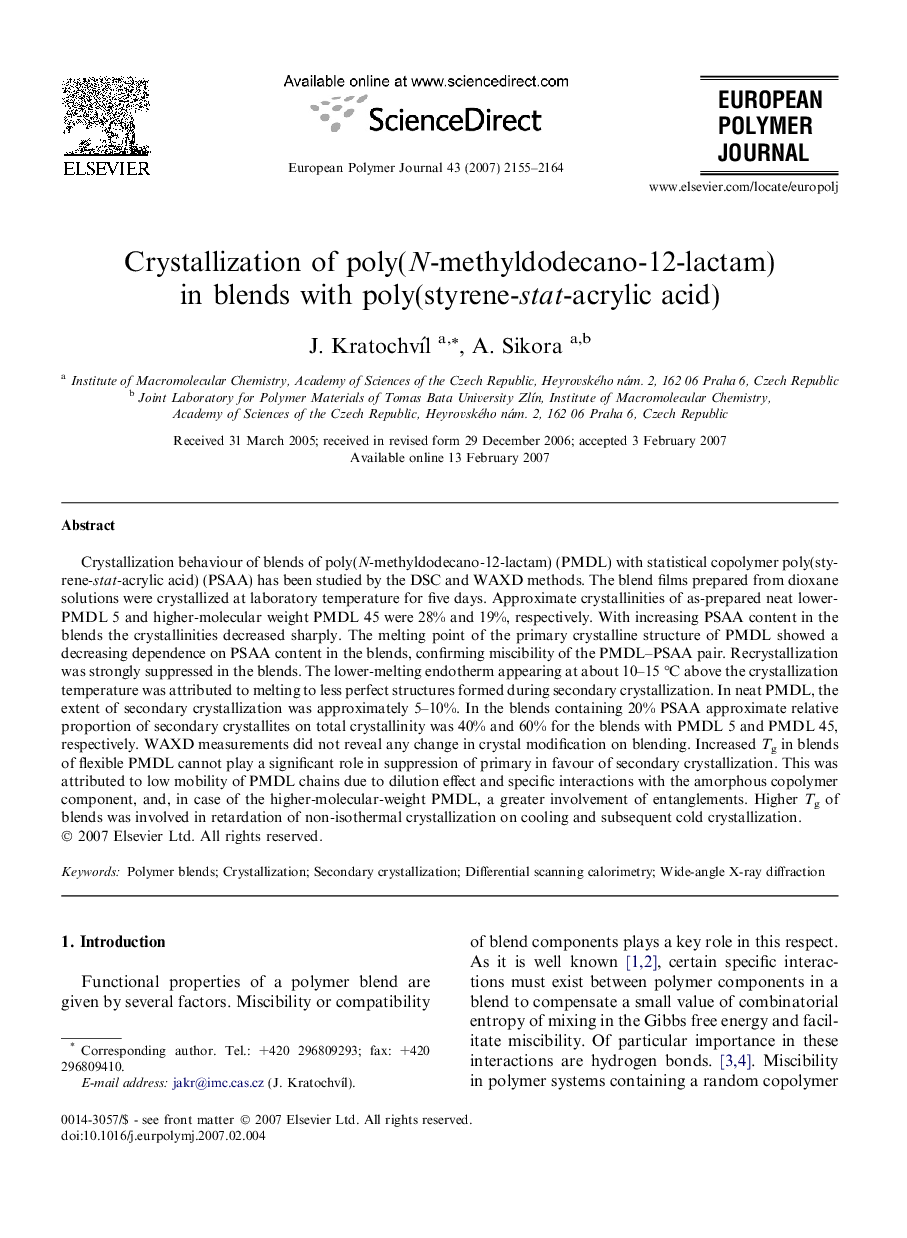| Article ID | Journal | Published Year | Pages | File Type |
|---|---|---|---|---|
| 1403619 | European Polymer Journal | 2007 | 10 Pages |
Abstract
Crystallization behaviour of blends of poly(N-methyldodecano-12-lactam) (PMDL) with statistical copolymer poly(styrene-stat-acrylic acid) (PSAA) has been studied by the DSC and WAXD methods. The blend films prepared from dioxane solutions were crystallized at laboratory temperature for five days. Approximate crystallinities of as-prepared neat lower- PMDL 5 and higher-molecular weight PMDL 45 were 28% and 19%, respectively. With increasing PSAA content in the blends the crystallinities decreased sharply. The melting point of the primary crystalline structure of PMDL showed a decreasing dependence on PSAA content in the blends, confirming miscibility of the PMDL-PSAA pair. Recrystallization was strongly suppressed in the blends. The lower-melting endotherm appearing at about 10-15 °C above the crystallization temperature was attributed to melting to less perfect structures formed during secondary crystallization. In neat PMDL, the extent of secondary crystallization was approximately 5-10%. In the blends containing 20% PSAA approximate relative proportion of secondary crystallites on total crystallinity was 40% and 60% for the blends with PMDL 5 and PMDL 45, respectively. WAXD measurements did not reveal any change in crystal modification on blending. Increased Tg in blends of flexible PMDL cannot play a significant role in suppression of primary in favour of secondary crystallization. This was attributed to low mobility of PMDL chains due to dilution effect and specific interactions with the amorphous copolymer component, and, in case of the higher-molecular-weight PMDL, a greater involvement of entanglements. Higher Tg of blends was involved in retardation of non-isothermal crystallization on cooling and subsequent cold crystallization.
Keywords
Related Topics
Physical Sciences and Engineering
Chemistry
Organic Chemistry
Authors
J. KratochvÃl, A. Sikora,
